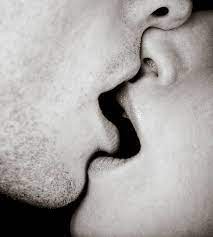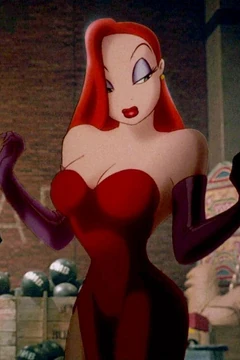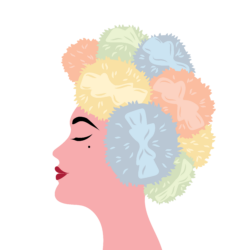Lust doesn’t have to arrive naked. Sometimes it wears a full face of makeup and never breaks eye contact.
In the world of beauty, lust is less about sex than about the suggestion of being wanted, or being impossible to ignore. It’s about attracting others, feeling magnetized yourself, commanding a room, knowing you’re being looked at, and controlling the gaze.
Lust in makeup is the psychological charge behind why we reach for the products we apply. Makeup can reflect performance, power, and the manipulation of attention. And in that space, it becomes as much about ego and escape as it is about intimacy.

Desire as Decoration
Real-life lust in beauty can be found in club nights or boudoir shoots but it also happens in subtler forms:
- The woman fresh out of a long marriage who suddenly wants to “feel sexy again” and asks for the “va-va-voom” makeover.
- The client preparing for a high school reunion, rehearsing a fantasy of bumping into an ex, looking unbothered and irresistible.
- The person who wears seductive makeup for job interviews, because being desirable, even non-sexually, often reads as being chosen, compelling, confident.
In all these examples, the motive is beyond just sex. The goal is to feel significant. Lust paints the face to be seen as unforgettable.
Lust Onscreen
In Who Framed Roger Rabbit, Jessica Rabbit is the literal cartoon of lust. Her exaggerated curves, glossy red lips, and sultry voice are a deliberate parody of male fantasy. But beneath that surface lies something more nuanced: Jessica uses the appearance of seduction as a shield, stage costume, and form of survival.
She famously says, “I’m not bad, I’m just drawn that way,” which perfectly captures the tension between identity and performance. Her look is one of total intentionality, but it’s also a commentary on how women, real and imagined, are visually constructed to embody desire, whether they asked to or not.
Jessica’s beauty is about wanting to be wanted as a kind of social power. But that power is double-edged: it draws attention, but it also invites judgment, danger, and misrecognition.

The Psychology of Lust in Appearance
Lust, psychologically, is deeply tied to projection—both of what we want and what we want to be seen as. It’s not always about physical gratification. Often, it’s a proxy for something deeper: attention, power, escape from invisibility.
In beauty culture, lust is sold through product names like “Orgasm,” “Afterglow,” and “Desire.” The message is clear: if you wear this, someone will want you. And if no one does? At least you might want yourself a little more.
When lust becomes the only mode of expression, it can mask vulnerability. The desire to be desired can replace the deeper need to be known. Lust thrives on surface tension, but human connection asks us to smudge the line.
Studio Confessions
I’ve seen lust in the makeup chair take many forms.
- The quiet woman who asked for a dramatic cat-eye and red lip “just to feel something.”
- The recently single mother who said, “I don’t even want a date. I just want to remember what it’s like to turn heads when I walk into the store.”
None of them were asking for sex. They were asking for permission to feel magnetic.
Between Seduction and Selfhood
There’s nothing shameful about wanting to be desired. The problem arises when we think that’s all we’re allowed to be.
Lust, like makeup, is a language. It can speak flirtation or power, curiosity or confidence. It can attract, distract, or protect. But when it becomes the only dialect, we lose fluency in our fuller selves.
True beauty doesn’t just say “want me.” It also says “see me,” “respect me,” and sometimes “leave me alone.” Lust may turn faces into fantasies but the deepest desire is to be seen beyond the paint.
